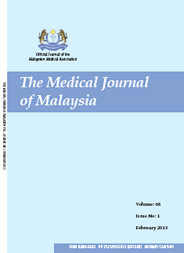MJM, Vol 70 Supplement 1 September 2015
Study on blood pressure (BP) status of Pos Raya
primary school children using BP percentiles measured by ‘BP calculator for
Diagnosis of Hypertension in children and adolescents’
Faculty of Medicine, Quest International University Perak, Ipoh, Perak
ABSTRACT
Introduction: Hypertension is a major public health problem with high prevalence among over 18 years of age in Malaysia. Now a day, globally, public health personnel also give attention to hypertension among children who are potential adult hypertensive. The study in Putrajaya secondary school highlighted the hypertension as a problem among adolescents. But no study was found regarding assessing blood pressure status among younger children. The objective of this study is to explore the BP status of the children of primary school in rural ethnic community.
Methods: This is a cross-sectional study of school children of the Sekola Pos Raya Primary School. Participants consist of 323 school children aged between 7 and 12 years from the Orang Asli ethnic village communities around the school. Data on gender, age, height, systolic and diastolic blood pressure (BP) measurements of children were recorded and fed into the “BP calculator for Diagnosis of Hypertension among Children and Adolescents”, to calculate the BP status with their respective percentiles. Classification of BP status is based upon the percentiles. For both systolic and diastolic BP, below 90th percentile is considered as ‘Normal BP’, from 90th percentile to below 95th percentile is considered as ‘pre-hypertension’ and 95th percentile and above is considered as ‘hypertension’. SPSS version 20 was used to analyse the overall BP status of children
Results: Overall BP statuses of primary school children were found to be normal or slightly low in few cases (62.5%), 14.3% as pre-hypertension and 23.2% as hypertension.
Conclusion: Although one point of time measurements and cross-sectional study design cannot make generalizable conclusions, it highlights the situation of hypertension among rural children of Orang Asli ethnic groups. The results can be used as a reference for future studies on BP status of children in both rural and urban communities of Malaysia.
